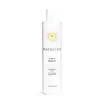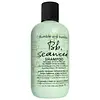What's inside
What's inside
 Key Ingredients
Key Ingredients

 Benefits
Benefits

 Concerns
Concerns

 Ingredients Side-by-side
Ingredients Side-by-side

Water
Skin ConditioningAloe Barbadensis Leaf Juice
Skin ConditioningCocamidopropyl Hydroxysultaine
CleansingSodium Cocoyl Isethionate
CleansingGlycerin
HumectantCaprylyl/Capryl Glucoside
CleansingSodium Levulinate
Skin ConditioningPotassium Sorbate
PreservativeGuar Hydroxypropyltrimonium Chloride
Skin ConditioningCitric Acid
BufferingButyrospermum Parkii Butter
Skin ConditioningSodium Gluconate
Skin ConditioningTocopherol
AntioxidantSwertia Japonica Extract
Skin ConditioningCyperus Esculentus Tuber Extract
Skin ProtectingSymphytum Officinale Leaf Extract
Skin ConditioningXanthan Gum
EmulsifyingCoconut Acid
CleansingSodium Isethionate
CleansingWater, Aloe Barbadensis Leaf Juice, Cocamidopropyl Hydroxysultaine, Sodium Cocoyl Isethionate, Glycerin, Caprylyl/Capryl Glucoside, Sodium Levulinate, Potassium Sorbate, Guar Hydroxypropyltrimonium Chloride, Citric Acid, Butyrospermum Parkii Butter, Sodium Gluconate, Tocopherol, Swertia Japonica Extract, Cyperus Esculentus Tuber Extract, Symphytum Officinale Leaf Extract, Xanthan Gum, Coconut Acid, Sodium Isethionate
Water
Skin ConditioningSodium Cocoyl Isethionate
CleansingCocamidopropyl Hydroxysultaine
CleansingPropanediol
SolventCocamidopropyl Betaine
CleansingPolyglyceryl-4 Caprate
EmulsifyingPolyglyceryl-6 Caprylate
EmulsifyingCaprylyl/Capryl Glucoside
CleansingMacrocystis Pyrifera Extract
Skin ConditioningLaminaria Saccharina Extract
Skin ProtectingChlorella Vulgaris Extract
Skin ConditioningLactobacillus Ferment
Skin ConditioningHelianthus Annuus Seed Oil
EmollientTocopherol
AntioxidantGuar Hydroxypropyltrimonium Chloride
Skin ConditioningCocamidopropyl Pg-Dimonium Chloride
Sodium Isethionate
CleansingCaprylyl Glycol
EmollientGlycerin
HumectantButylene Glycol
HumectantEthylhexylglycerin
Skin ConditioningPyridoxine Hcl
Skin ConditioningPanthenol
Skin ConditioningZinc Sulfate
AntimicrobialChlorophyllin-Copper Complex
AntioxidantCitric Acid
BufferingAlcohol
AntimicrobialSodium Chloride
MaskingCoconut Acid
CleansingParfum
MaskingLimonene
PerfumingAscorbyl Palmitate
AntioxidantSodium Phytate
Phenoxyethanol
PreservativeChlorphenesin
AntimicrobialPotassium Sorbate
PreservativeSodium Benzoate
MaskingCI 75120
Cosmetic ColorantWater, Sodium Cocoyl Isethionate, Cocamidopropyl Hydroxysultaine, Propanediol, Cocamidopropyl Betaine, Polyglyceryl-4 Caprate, Polyglyceryl-6 Caprylate, Caprylyl/Capryl Glucoside, Macrocystis Pyrifera Extract, Laminaria Saccharina Extract, Chlorella Vulgaris Extract, Lactobacillus Ferment, Helianthus Annuus Seed Oil, Tocopherol, Guar Hydroxypropyltrimonium Chloride, Cocamidopropyl Pg-Dimonium Chloride, Sodium Isethionate, Caprylyl Glycol, Glycerin, Butylene Glycol, Ethylhexylglycerin, Pyridoxine Hcl, Panthenol, Zinc Sulfate, Chlorophyllin-Copper Complex, Citric Acid, Alcohol, Sodium Chloride, Coconut Acid, Parfum, Limonene, Ascorbyl Palmitate, Sodium Phytate, Phenoxyethanol, Chlorphenesin, Potassium Sorbate, Sodium Benzoate, CI 75120
Ingredients Explained
These ingredients are found in both products.
Ingredients higher up in an ingredient list are typically present in a larger amount.
Caprylyl/Capryl Glucoside is an alkyl glucoside. This just means it is creating by reacting alcohol and sugar. It is a cleansing and foaming ingredient.
Caprylyl/Capryl Glucoside helps remove the dirt, oil, and other pollutants from your skin.
Citric Acid is an alpha hydroxy acid (AHA) naturally found in citrus fruits like oranges, lemons, and limes.
Like other AHAs, citric acid can exfoliate skin by breaking down the bonds that hold dead skin cells together. This helps reveal smoother and brighter skin underneath.
However, this exfoliating effect only happens at high concentrations (20%) which can be hard to find in cosmetic products.
Due to this, citric acid is usually included in small amounts as a pH adjuster. This helps keep products slightly more acidic and compatible with skin's natural pH.
In skincare formulas, citric acid can:
While it can provide some skin benefits, research shows lactic acid and glycolic acid are generally more effective and less irritating exfoliants.
Most citric acid used in skincare today is made by fermenting sugars (usually from molasses). This synthetic version is identical to the natural citrus form but easier to stabilize and use in formulations.
Read more about some other popular AHA's here:
Learn more about Citric AcidCocamidopropyl Hydroxysultaine is a synthetic cleansing agent, though it is derived from coconut oil.
It is used to enhance the texture of products by boosting lather and thickening the texture. As a cleanser, Cocamidopropyl Hydroxysultaine is mild.
Coconut Acid isn't fungal acne safe.
Glycerin is already naturally found in your skin. It helps moisturize and protect your skin.
A study from 2016 found glycerin to be more effective as a humectant than AHAs and hyaluronic acid.
As a humectant, it helps the skin stay hydrated by pulling moisture to your skin. The low molecular weight of glycerin allows it to pull moisture into the deeper layers of your skin.
Hydrated skin improves your skin barrier; Your skin barrier helps protect against irritants and bacteria.
Glycerin has also been found to have antimicrobial and antiviral properties. Due to these properties, glycerin is often used in wound and burn treatments.
In cosmetics, glycerin is usually derived from plants such as soybean or palm. However, it can also be sourced from animals, such as tallow or animal fat.
This ingredient is organic, colorless, odorless, and non-toxic.
Glycerin is the name for this ingredient in American English. British English uses Glycerol/Glycerine.
Learn more about GlycerinThis ingredient is derived from guar gum.
It is a conditioning ingredient, meaning it helps soften skin and hair.
Potassium Sorbate is a preservative used to prevent yeast and mold in products. It is commonly found in both cosmetic and food products.
This ingredient comes from potassium salt derived from sorbic acid. Sorbic acid is a natural antibiotic and effective against fungus.
Both potassium sorbate and sorbic acid can be found in baked goods, cheeses, dried meats, dried fruit, ice cream, pickles, wine, yogurt, and more.
You'll often find this ingredient used with other preservatives.
Learn more about Potassium SorbateSodium cocoyl isethionate is a natural ingredient from coconut oil. It is an ultra gentle cleanser that gives a nice foam without drying the skin or impacting the skin barrier.
The amount of foam created depends on the amount of sodium cocoyl isethionate used in the product.
This ingredient also helps improve the spreadability of a product.
Learn more about Sodium Cocoyl IsethionateWe don't have a description for Sodium Isethionate yet.
Tocopherol (also known as Vitamin E) is a common antioxidant used to help protect the skin from free-radicals and strengthen the skin barrier. It's also fat soluble - this means our skin is great at absorbing it.
Vitamin E also helps keep your natural skin lipids healthy. Your lipid skin barrier naturally consists of lipids, ceramides, and fatty acids. Vitamin E offers extra protection for your skin’s lipid barrier, keeping your skin healthy and nourished.
Another benefit is a bit of UV protection. Vitamin E helps reduce the damage caused by UVB rays. (It should not replace your sunscreen). Combining it with Vitamin C can decrease sunburned cells and hyperpigmentation after UV exposure.
You might have noticed Vitamin E + C often paired together. This is because it is great at stabilizing Vitamin C. Using the two together helps increase the effectiveness of both ingredients.
There are often claims that Vitamin E can reduce/prevent scarring, but these claims haven't been confirmed by scientific research.
Learn more about TocopherolWater. It's the most common cosmetic ingredient of all. You'll usually see it at the top of ingredient lists, meaning that it makes up the largest part of the product.
So why is it so popular? Water most often acts as a solvent - this means that it helps dissolve other ingredients into the formulation.
You'll also recognize water as that liquid we all need to stay alive. If you see this, drink a glass of water. Stay hydrated!
Learn more about Water